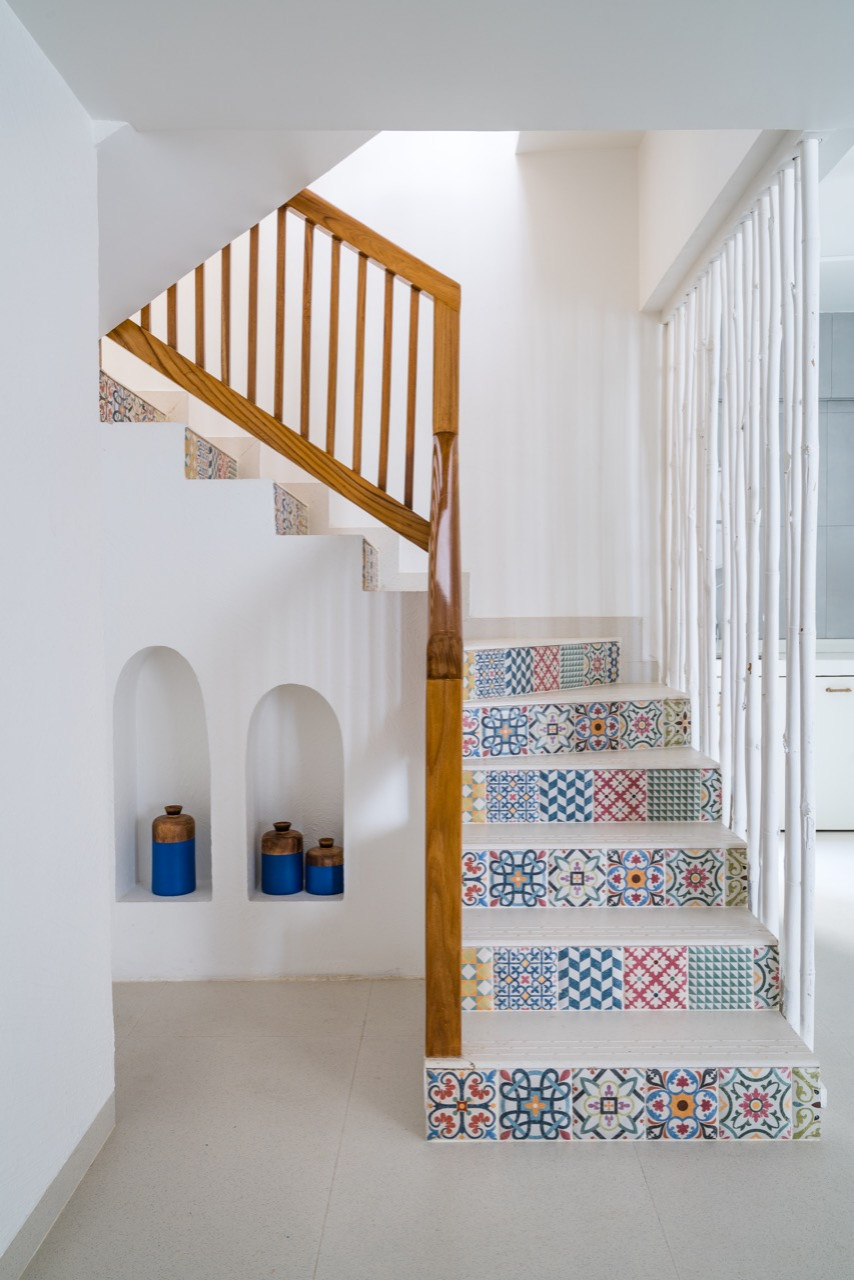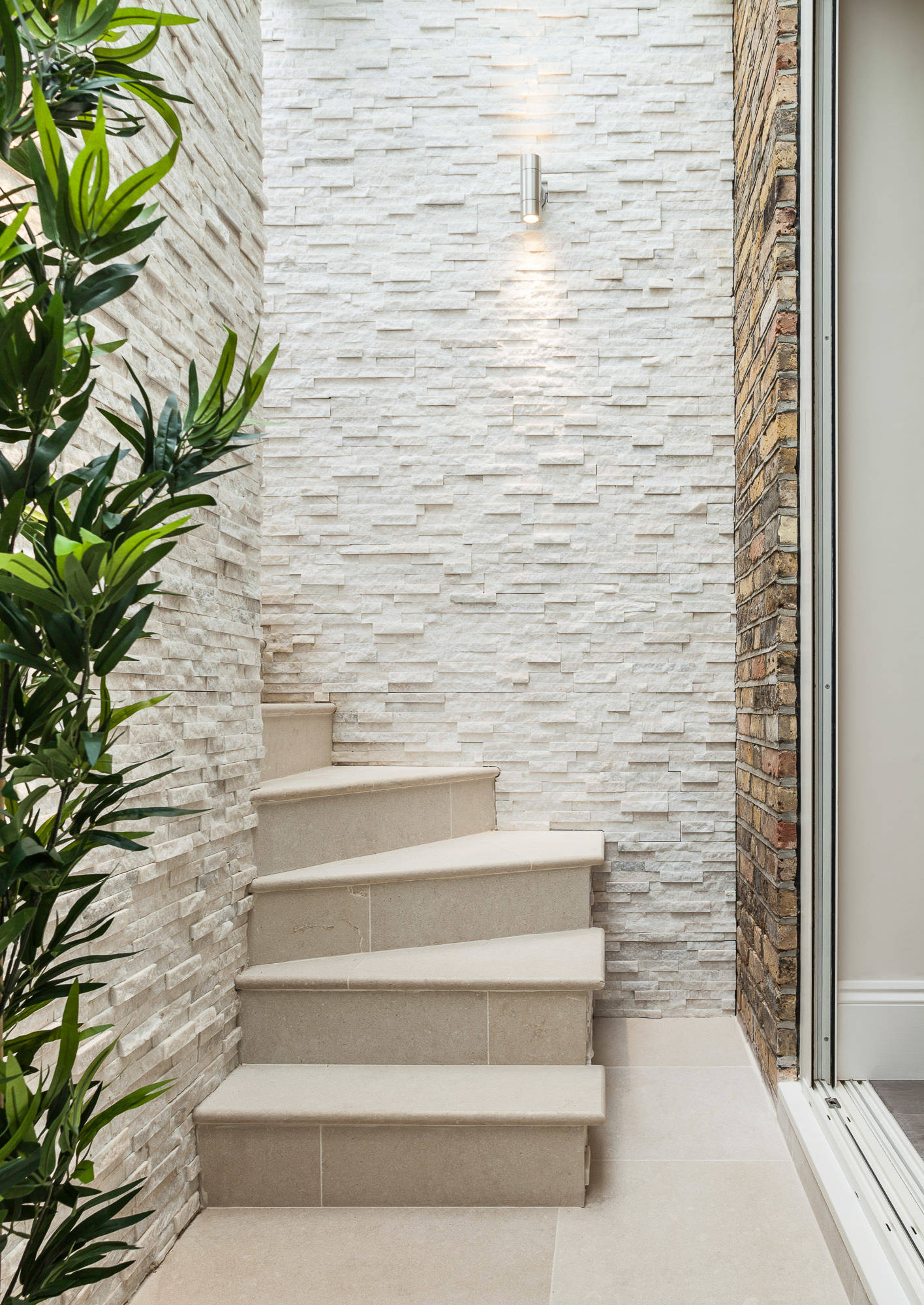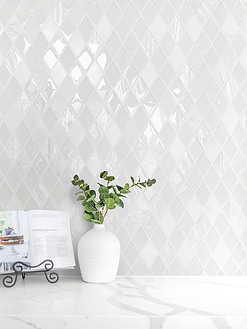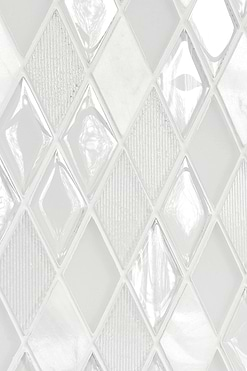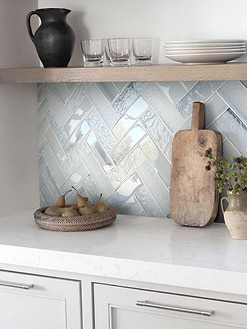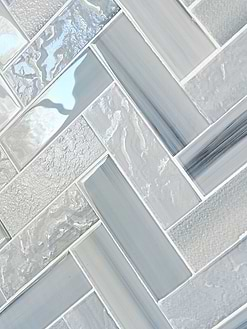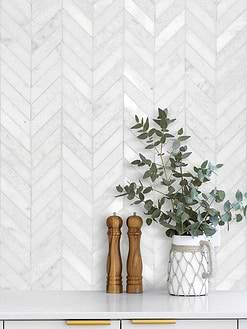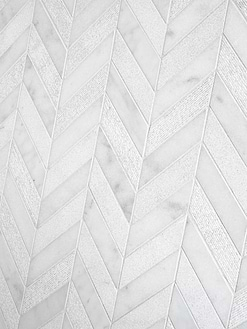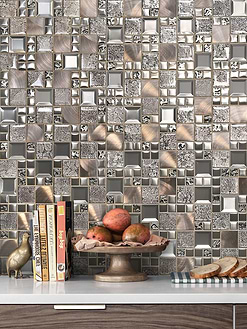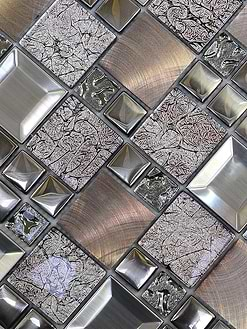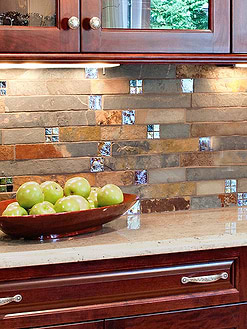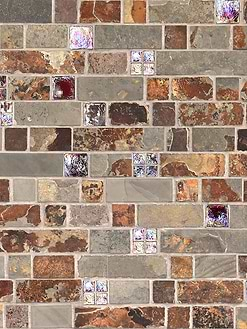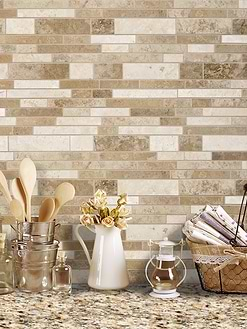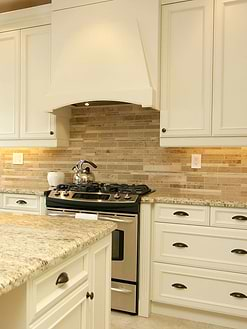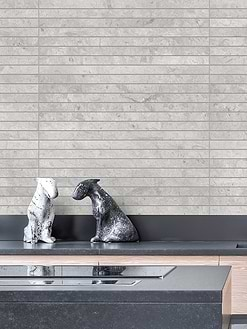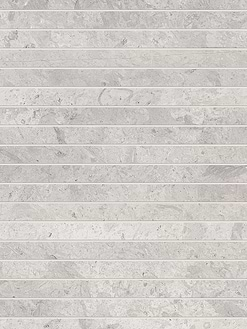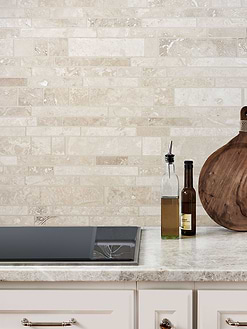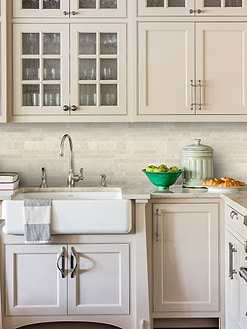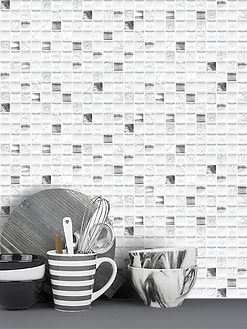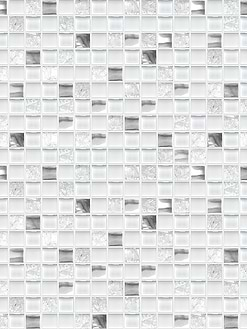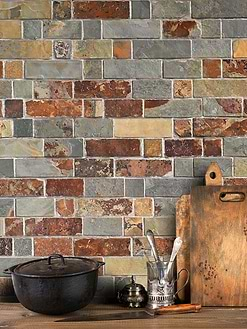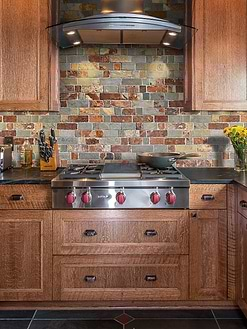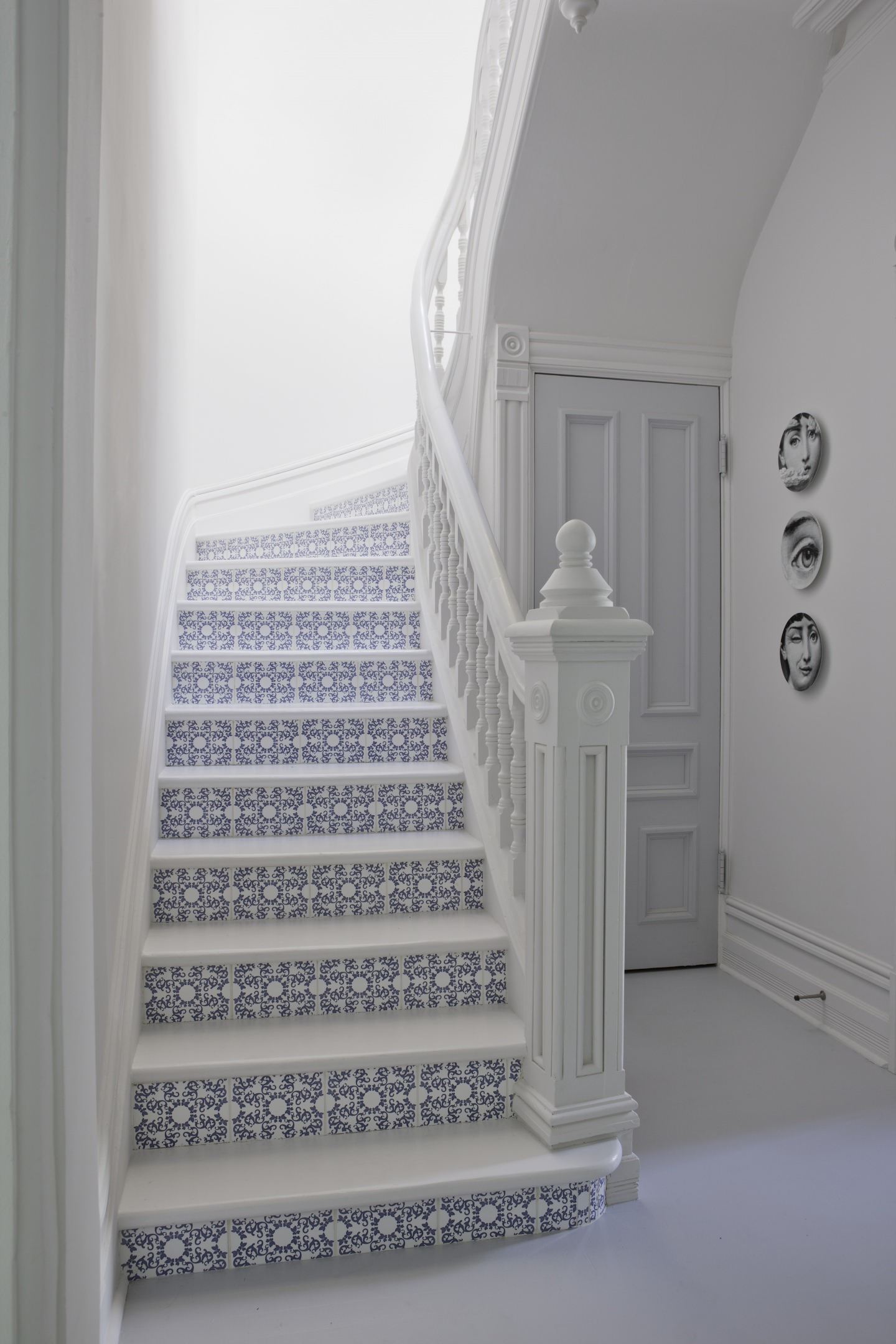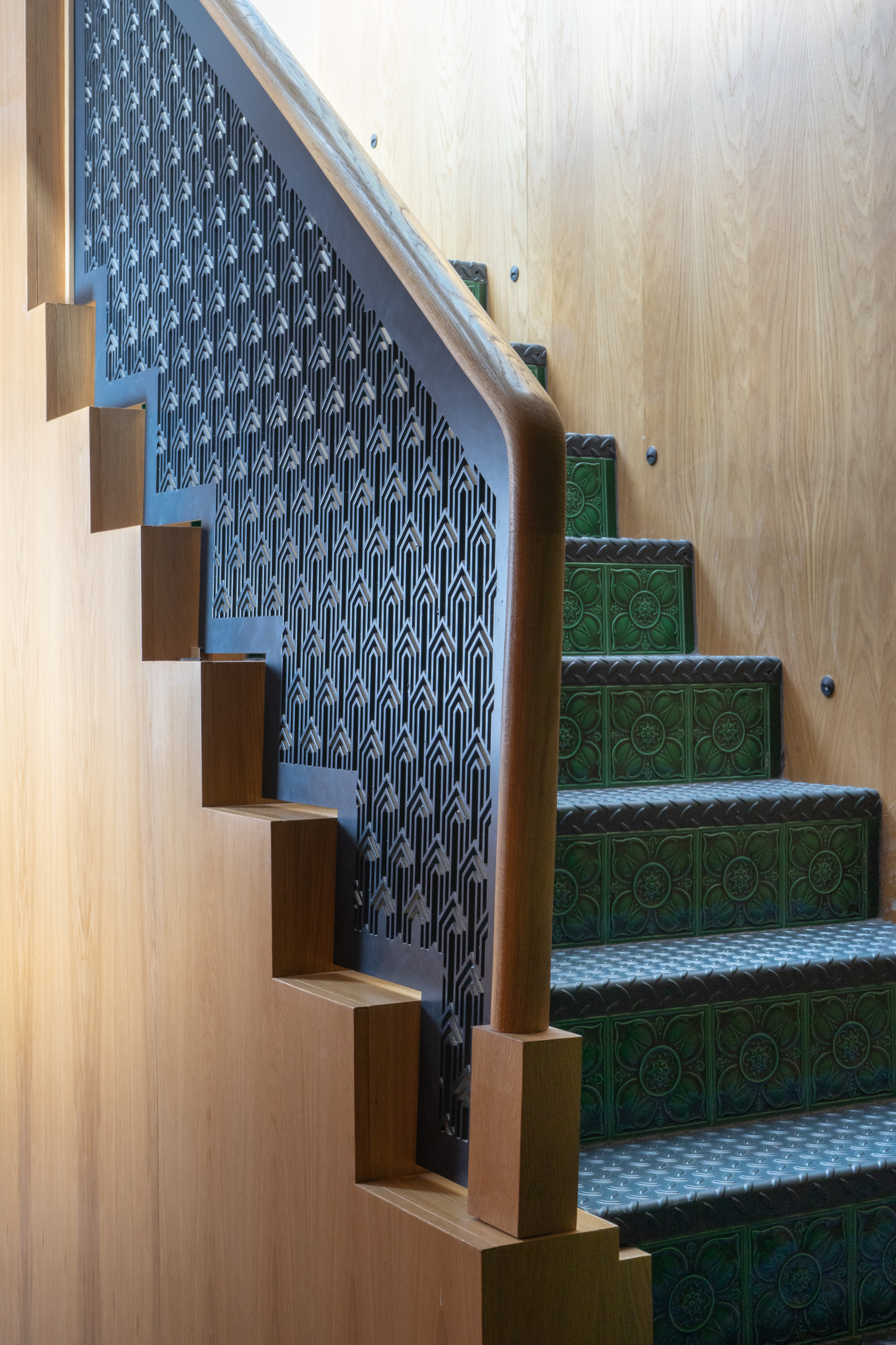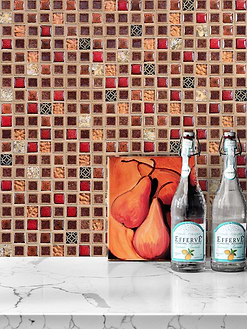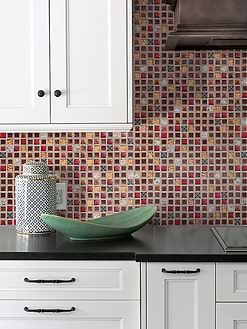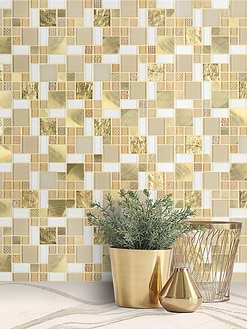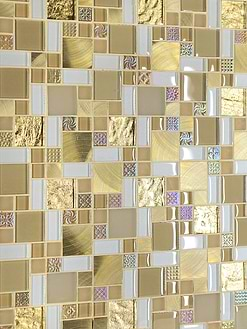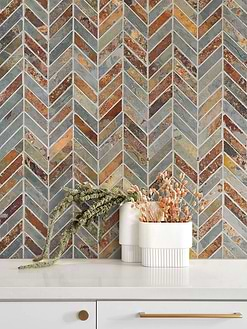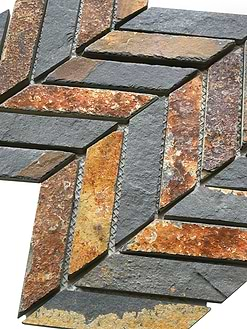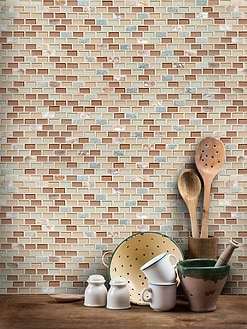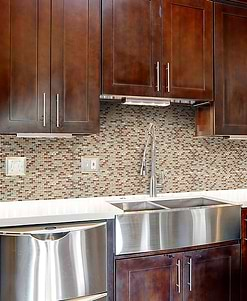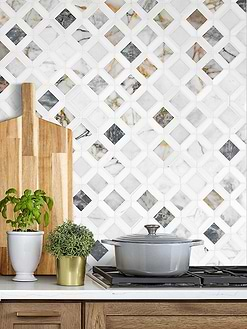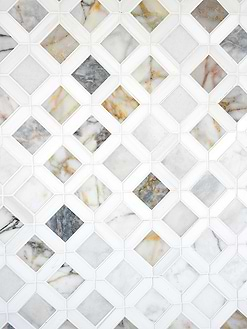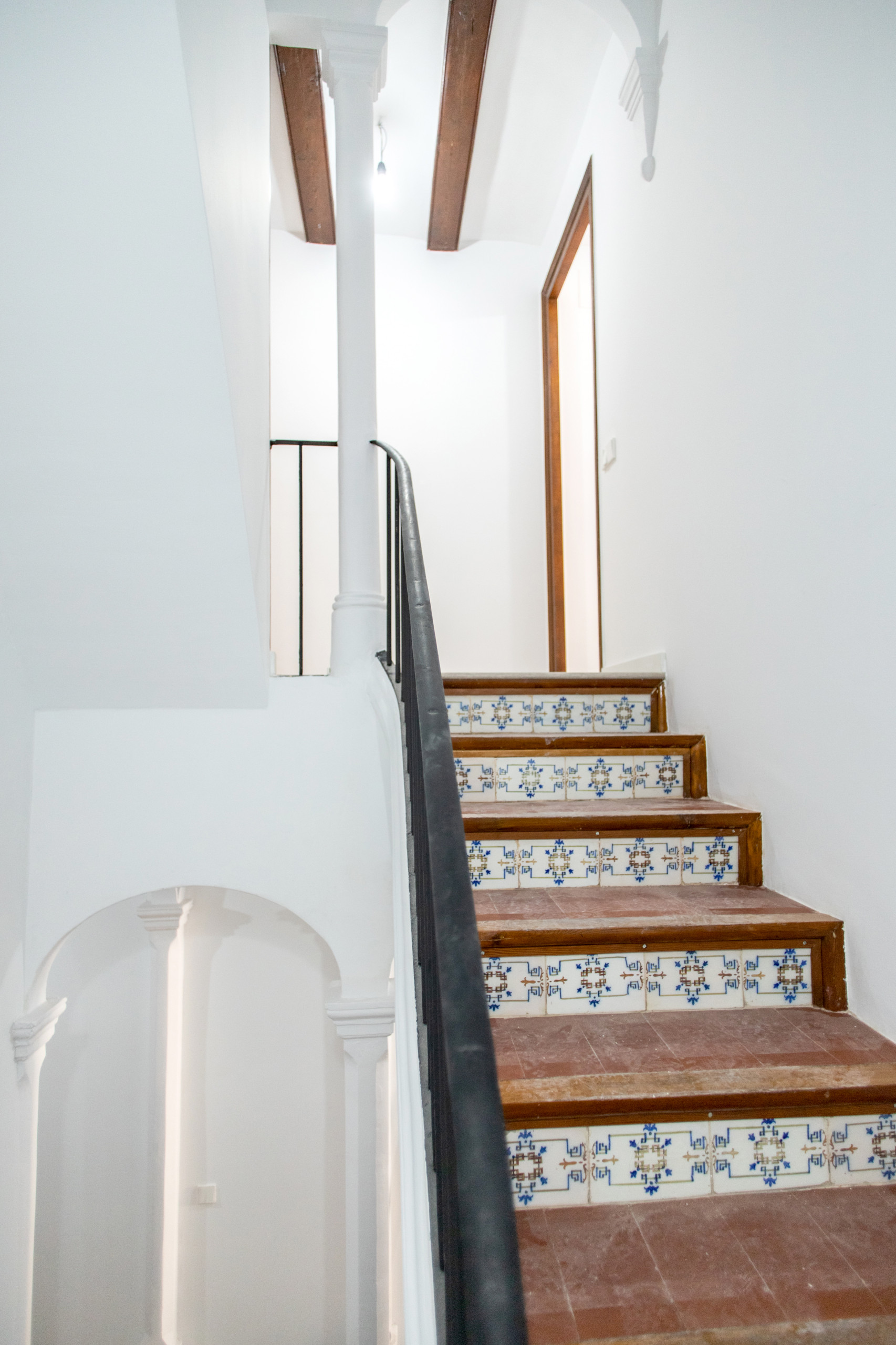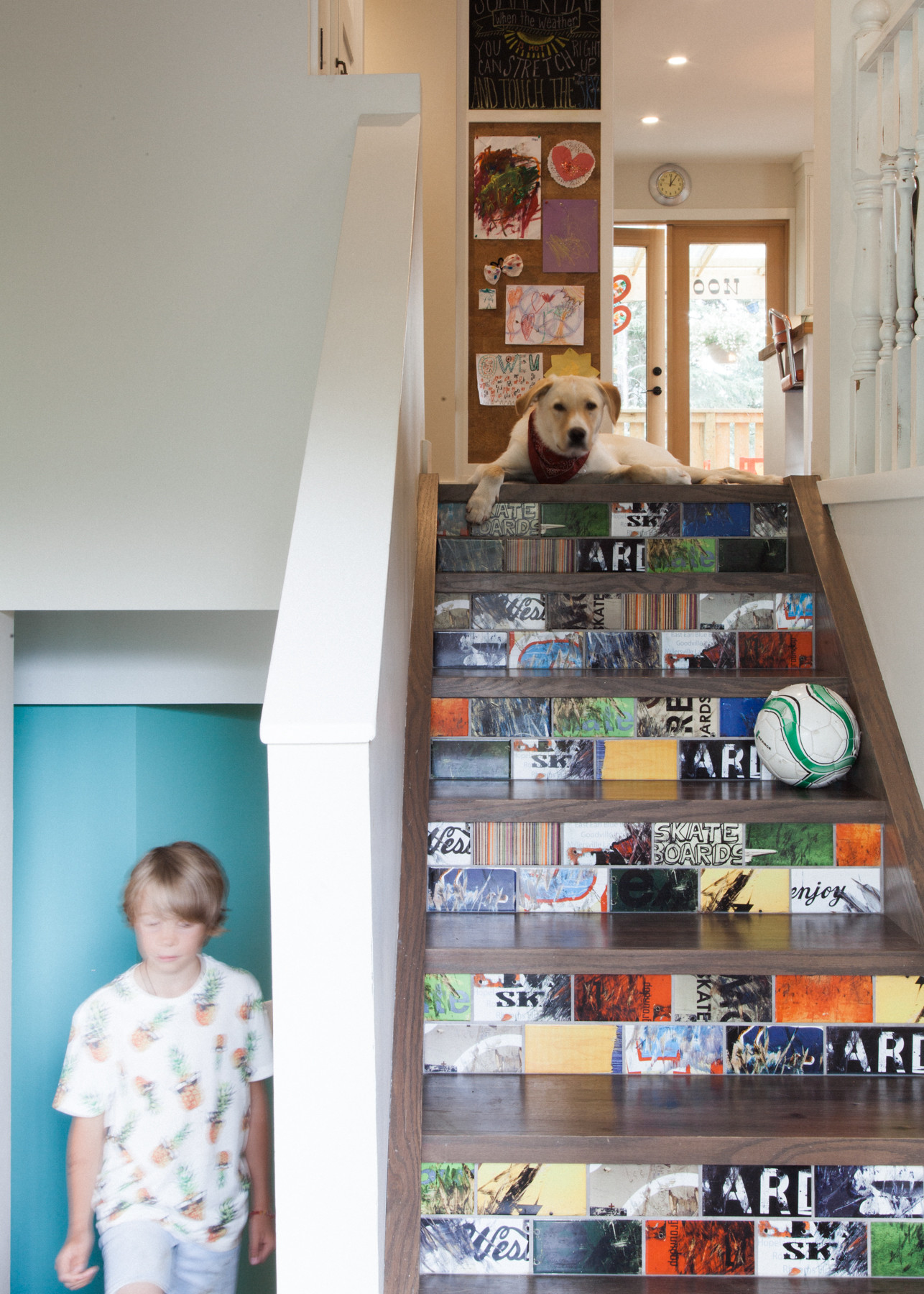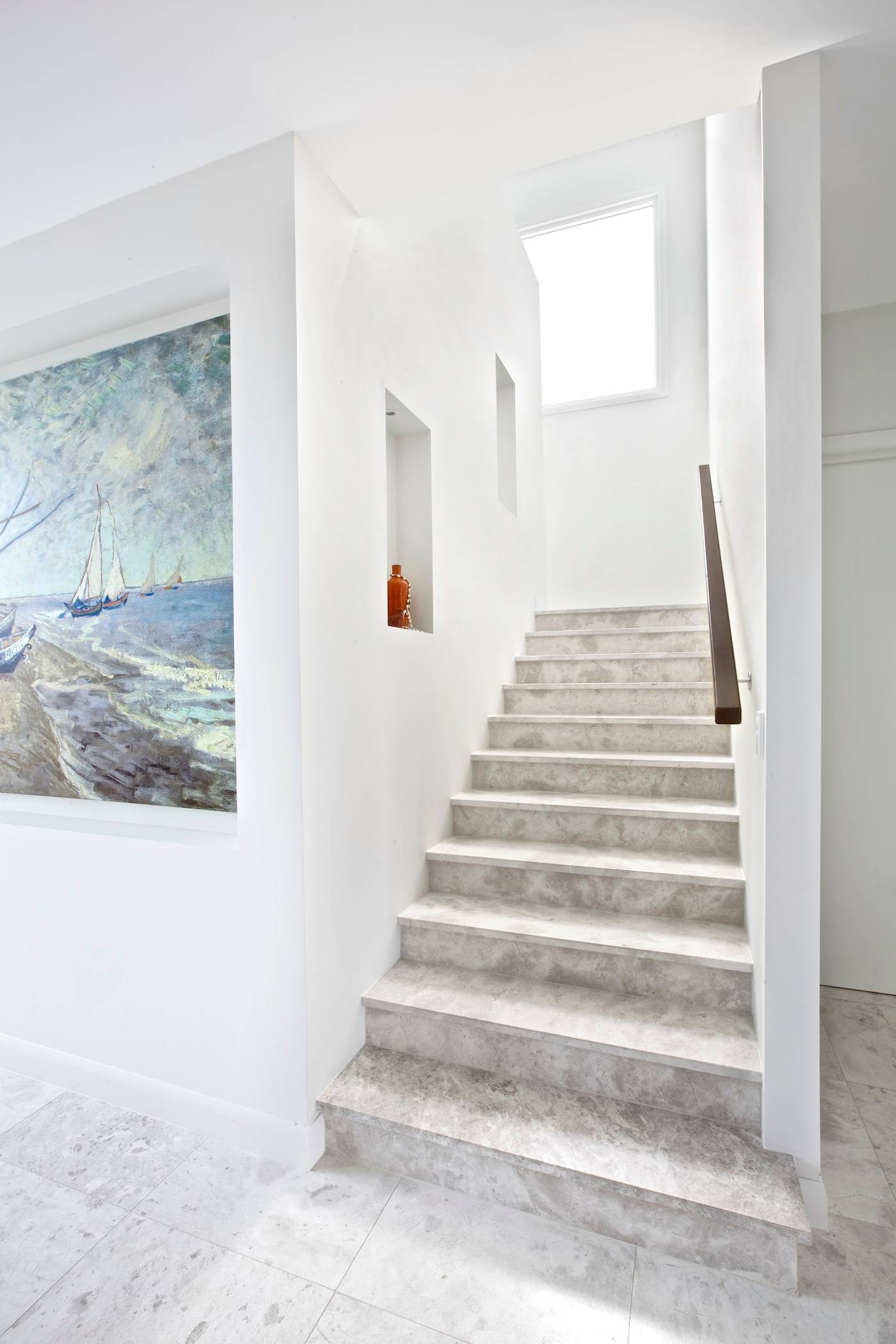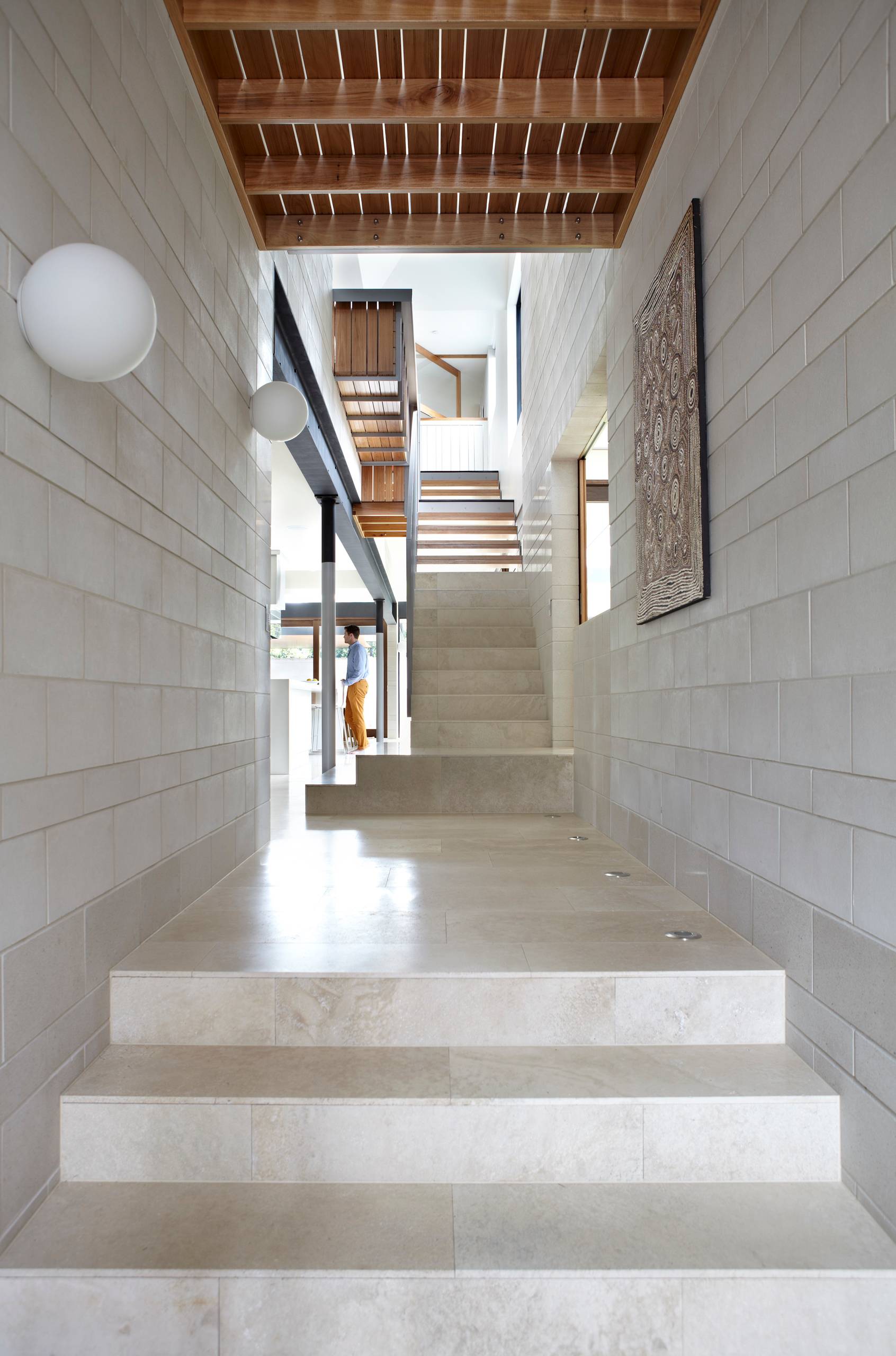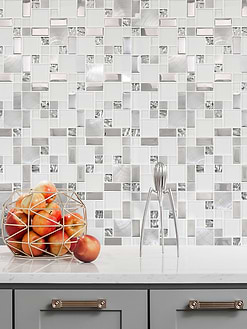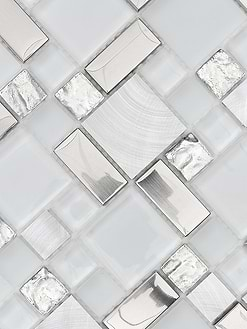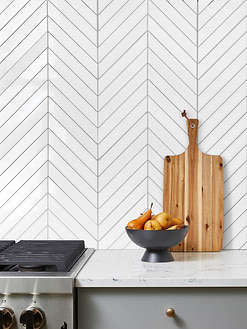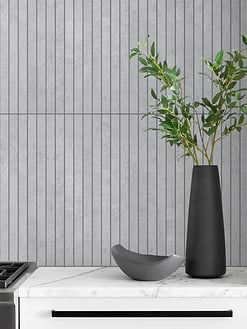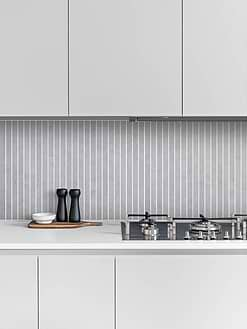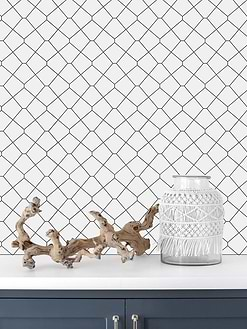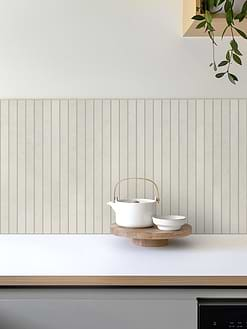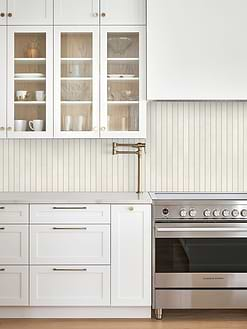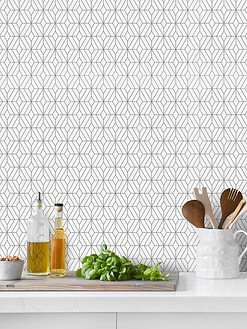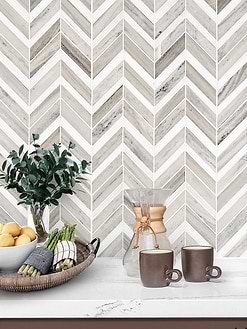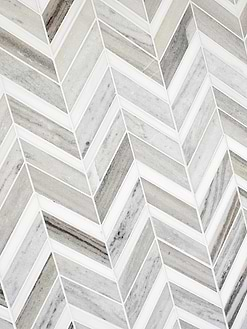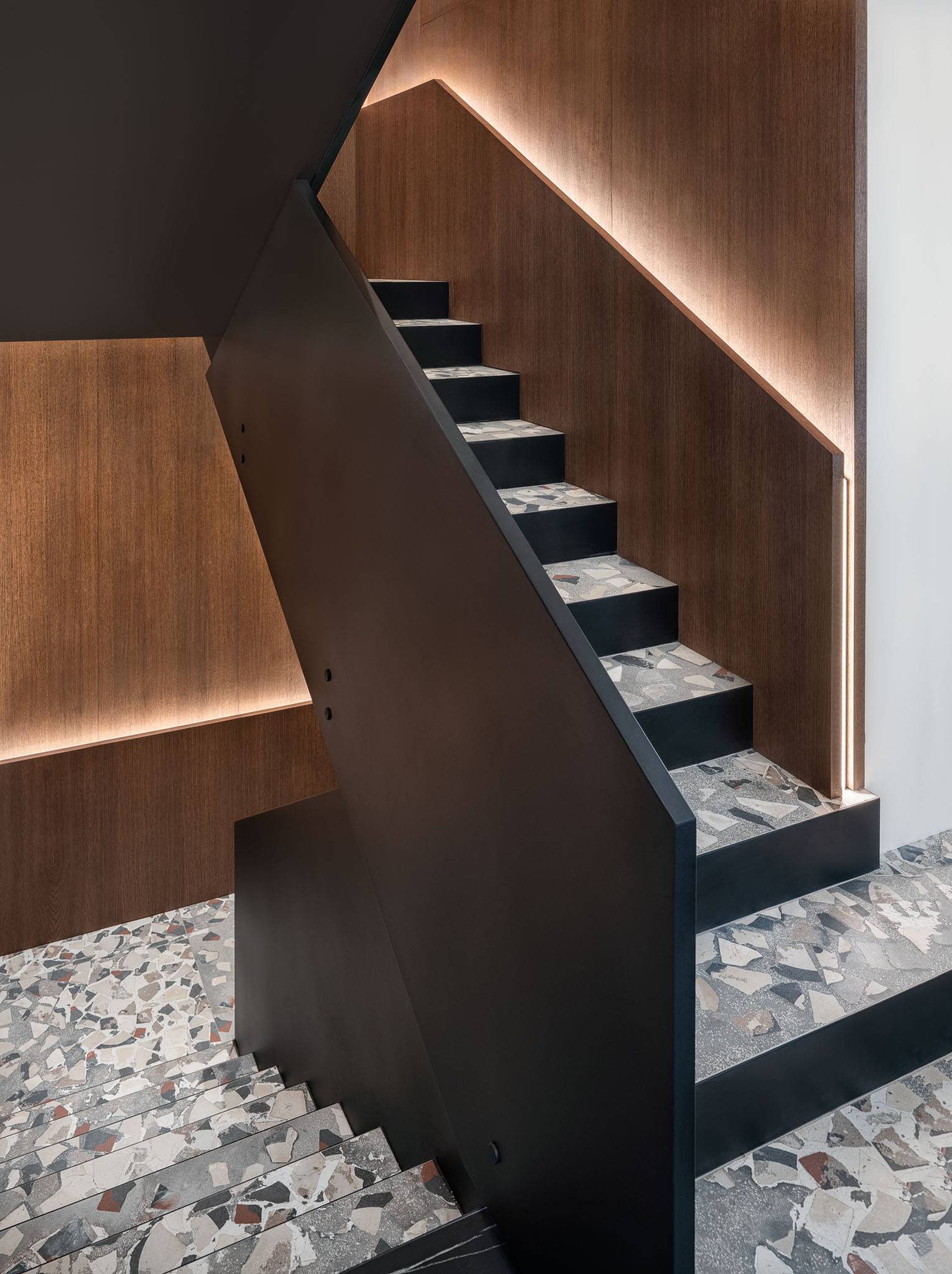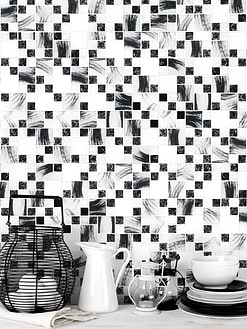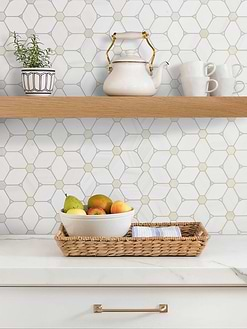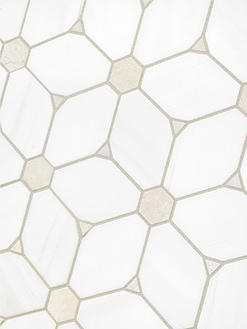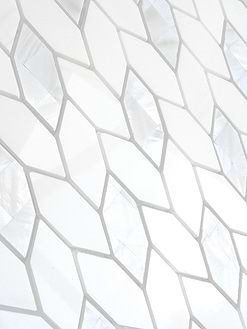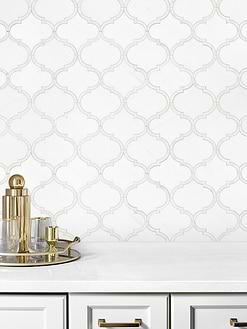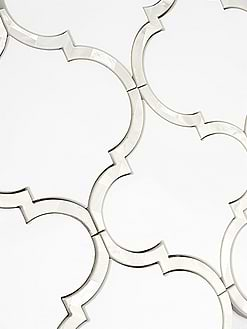16+ Tile Staircase Ideas
ID# 170201 | Houzz.com – Credit | © Between Walls
Curved Staircase with Patterned Risers and Wooden Railing
Enriched by a blend of organic textures and geometric patterns this curving staircase creates an attractive circular movement that connects the two floors! The white treads are complemented by colorful patterned tile staircase risers and the wood railings that provide delicate-looking yet strong support to lean on while climbing the stairs up and down. The white parts of the stairs match the white-painted walls, while the wood details warm this white-dominated atmosphere.
ID# 170209 | Houzz.com – Credit | © Jo Cowen Architects
Outdoor Beige Tile Staircase Ideas with Stacked Stone Walls
Abundant in soft beige hues, this stunning outdoor tile staircase provides a warm and welcoming atmosphere for its users. Feeling well-coordinated with the environment, the tile staircase is coated with beige risers and treads while the surrounding beige stacked stone walls complement the tiles, acting as a blank canvas waiting to be colored.
Tile Staircase Ideas
As fundamental architectural pieces for both indoor and outdoor designs, whether low or high, the staircases are a huge part of our lives and our homes that commute the different levels of the homes or any space consisting of various volumes. The fact that staircases are composed of various materials, namely treads, steps, railings, and risers, means that they also feature many elements to be designed, allowing designers and homeowners to be as creative as they can be. And tile staircase ideas are only one part of it that we will be exploring in this blog.
Jazz up Your Stairs with Eye-catching Tiles
Apart from their functionality, the staircases are charged with aesthetic values and even smartly designed as storage places. As such, they can create strong and eye-appealing visual forms while helping circulation and human traffic flow. Rich in colors and textures with variously styled iron, wooden, and glass railings, the staircases can easily become a visual focal point in your foyer. Now let’s discover some tile staircase ideas that are inspiring and enrich the overall look of the stairs and the room instantly.
Best Seller Mosaic Tiles
ID# 170202 | Houzz.com – Credit |© Igloo Design
Bright and Spacious Hallway with Blue Patterned Tiles
This rather steep-looking staircase starts in the hallway where the white color dominates the space. The dark blue patterned riser tiles add a splash of color alongside the white walls while the white treads complement the bright and spacious atmosphere. The eye-catching railing design acts as a piece of art. These vertical volumes add dimension and layers of texture to accompany the staircase along with the crisp white walls.
Can you tile a staircase?
Yes, you can. Though it sounds complicated at first, it is not extremely different from tiling your walls and installing a backsplash. The most complicated part is probably the measurement, especially if you have curved stairs or staircases with winders, things get more complicated. Once you pull off the measuring of the application area correctly in terms of square meters, then you can start to feel more confident.
ID# 170203 | Houzz.com – Credit | © Nikki Hinton
Tile Staircase Ideas with Green Risers and Metal Treads
In this staircase design, the combination of gray and wood is crowned with green Moroccan-style risers that create an eye-catching look. As you go up, the stainless steel treads add a raw and rustic flavor to accompany the medium-tone wooden wall panels. Overall, the variety of authentic materials abundant in textures carries a Mediterranean breeze and Spanish vibes to contrast the crispy white railings.
Material Options for Tile Staircase Ideas
Material options for tile staircases include ceramics, porcelain, cement, glass, marble, granite, and travertine. All of them are quite durable materials, thus suitable to be used in heavy-traffic areas. Marble and granite fit into many design concepts, delivering sophistication to the space, while cement and ceramics offer excellent tile patterns for those who want to create colorful staircase designs. Glass is used mostly to lend a contemporary feel, achieving full transparency and evoking visual interest. Though they seem fragile, they are very strong materials but cost more than when compared to the other materials. For rustic and earthy vibes, travertine is a great material applicable to indoor and outdoor areas.
Cement Tile Staircase Ideas
Since the 1800s Europe extremely durable cement tiles have been around and capturing attention for a long time. Coming in various patterns and colors ranging from floral designs to geometric shapes, they can be applied to the bathroom and kitchen floors and walls and also staircase tiles. For those who love textures, cement tiles grow patina over time, which gives them a more natural charm and a lived-in feel. During the installation, they need to be sealed several times, which will improve their durability performance in the long term.
If you want to upgrade your staircase and look for an alternative to ceramics, you can consider cement tiles. As they require low maintenance and offer durability even in heavy human traffic, they are suitable to be used for staircases. For their high customizability, the cement tiles can achieve various impacts, ranging from minimalist looks with subtle beauty to Spanish vibes with a Mediterranean subtext, floral patterns, and geometric designs. In all cases, they will create impressive visual representations. You can bring them into a dialogue with wood textures. For staircase risers, you can use alternating tiles on each level or even different patterned tiles on the same row to achieve a sense of diversity, which is popularly applied especially in Mediterranean-inspired houses.
ID# 170204 | Houzz.com – Credit | © DollHouse Design
Black and White Tiled Staircases with Glass Railing
In this Mediterranean-inspired design, the Spanish-tiled staircases introduce intimacy and the elegance of the black and white combination that dominates the space! The staircase rises are all clad with cement tiles featuring various patterns reminiscent of flowers while the glass railing design enhances the modern aesthetic. The light wood stair treads soften the sharp contrast perfectly. If wished, homeowners can place potted plants and decorative items such as sculptures on this generous extension to turn the empty corner into a more attractive space.
Colorful Mosaic Tiles
ID# 170205 | Houzz.com – Credit | © Noga Arenson – Interior Design
Modern Industrial Tile Staircase Ideas with Glazed Wood Treads
This colorful and unique staircase design exerts a modern influence on the home, the glazed wood treads dialogue with the Moroccan tiles of various colors and patterns to add strength and versatility to the design. These tiles give the stairway a character, complemented with wrought-iron railings. The intricate scrollwork of the railings frames the staircase, enriching the overall design while contributing additional embellishment. Likewise, the ornamental rug in the living area leading to the stairs resonates with the Mediterranean vibes that pull the whole design together.
How to tile a staircase?
Tiles apply to any flooring substrates as long as they are in good condition. To start with, measure the application area, decide which pattern and what kind of style you want for your stairs, buy the tiles, and order some extra supplies just in case.
Before starting to tile a staircase, first ensure that the surface is clean, dry, dust-free, and has no damage. Also, every stair should be positioned properly and even. To do that, use a spirit level, and if you find any irregularities, you can fix them with a mortar and trowel. Then prime the surfaces to make them ready for tiling. Start from the top of the staircase and move towards the bottom.
If your staircase is made of wood, you can consider covering it with backer boards first as wood expands over time. The next step is applying the adhesive. With the flat edge of the notched trowel, apply the adhesive to the stairs evenly, to the area a bit larger than the tile to allow yourself to make adjustments to fit the tile into its place perfectly. Use a rubber hammer to ensure that the tile feels adhered to the surface and utilize spacers to leave even spaces between the tiles. Clean the excess thin-set that sticks out from the edges before it dries out.
After installing the tiles, you should install the tile nosing to give the stairs a smooth and stylish finish, which will also make them safer for you. When your project is complete, you should wait 24-48 hours before starting to use the staircase again.
Supplies you need:
Mortar, trowel, notched float, drill machinery, soft cloth, eye goggles, gloves for hand protection, and a rubber hammer.
ID# 170206 | Houzz.com – Credit | © Grupo Inventia
Stunning Mediterranean Staircase Design with Dark Wood and Multi-Colored Cement Tiles
In the stunning Mediterranean staircase design, the multi-colored tiles meet a robust set of dark Tuscan wooden steps that create a visual drama that suspends the overall look in a sense of mystery. The dark blue and yellow shades of the tiles refer to the sun and the sea that recall the Mediterranean colors and its laid-back colorful atmosphere alongside the wood treads that echo the earth. Additionally, the combination of black wrought iron balusters with wooden handrails assists the steps that emit bohemian vibes and contrast the crispy white walls.
Ceramic Tile Staircase Ideas
Ceramic tiles are durable materials with a hard surface that doesn’t attract or trap dust or dirt. This characteristic also makes them easy to clean and maintain! That’s why ceramics are one of the popular materials to coat the stair risers as well as porcelain tiles which are stronger and less water-absorbent versions of the ceramics.
ID# 170207 | Houzz.com – Credit | © ABBW angelobruno building workshop
Tile Staircase Ideas with Ceramics and Light Wood
The Mediterranean style home with crisp white walls and window opening filters light and air beautifully. Abundant in light wooden textures, it emits organic vibes. Likewise, the wooden treads of the staircase are referenced in the other wooden materials. The ceramic tiles serving as risers add a visual dynamic to energize the soothing and dramatic appeal of the wood.
How to calculate staircase tiles?
Calculating the staircase tiles might seem like a daunting task but it is not supposed to be! The staircases generally have 14 stairs, measuring 1 meter on the horizontal and 8 meters on the vertical axis. This requires a 2-by-4-meter piece. But you can get a slightly larger piece in case things go wrong which you can also save for the future. For curved staircases, you should add 50 cm per curve!
But, if your staircase materials are going to be wood or laminate, you need to calculate the square footage. To do so, think of the stair as two rectangles and measure the width and length of the tread and the length of the riser. Sum up the lengths and multiply the result with the width of the tread. Divide the result by 10,000 and multiply it by the number of stairs which will give you the total area to be coated. For example, let’s assume that:
Width of tread: 40
Length of thread: 10
Length of riser:20
The number of stairs: 14
20+10=30, 40*30=1200, 1200/10000:0.12 m2 (area of each stair), 0.12*14: 1.68 m2 (total area to be covered)
ID# 170208 | Houzz.com – Credit | © Holly Holbrook Design
Eclectic Staircase Design with Colorful Subway Tiled Risers
These eye-catching stairs are framed by white walls which create a bright and fresh appeal to make the stairs stand out more! Apart from that, the wood treads add a rustic flavor that blends into the surroundings while the ceramic subway-tiled staircase risers suggest a cultivated design showcasing how you can get creative and bring joy to your home with small touches!
Which tile is best for stairs?
The answer to this question is dependent on personal taste, the overall theme of the house, and how much traffic the stairs receive every day. But, of course, certain materials attach more attention to cover the stairs. One of these most popular tile materials is porcelain which is durable and requires low maintenance. Plus, in addition to its various color and pattern options, porcelains can mirror stone, wood, and marble patterns, endowing your stairs to gain a level of authenticity.
Secondly, laminate is another material as it is cheaper and easier to fix, but the disadvantageous part of the laminate is that it produces more noise when walking on it.
As an alternative to the tiles, you can benefit from runners. But make sure to install them securely so they won’t slip beneath your feet or put you out of your balance while constantly moving as you traverse the staircases.
Marble Tile Staircase Ideas
Having proven itself as one of the most durable and sophisticated natural stones, marble is a popular material used for tiling staircases to add much-needed grandeur and achieve a statement finish. For example, Calacatta black and Calacatta gold endow staircases with a timeless appeal and elegance. For more dramatic looks, you can choose the marble with pronounced veins, while the lightly streaked versions provide a subtle beauty. You can clad both treads and risers with marble or use it to cover only one of these two components to highlight the specific parts of the staircase.
Whether modern, or classic style and straightforward, curved, or cantilevered floating staircases, marbles give you the flexibility to create designs that fall into the different architectural categories.
But don’t forget to avoid using glazed marble tiles as they get slippery when wet. And of course, while choosing your marble, also consider the overall architectural mood and design theme of your house so that your marble staircases won’t look out of place.
ID# 170210 | Houzz.com – Credit | © The Pool Tile Company
Modern Marble Staircase with Built-in Niches
Enriched by an airy and well-lit foyer, the modern staircase communicates a sense of luxury! As it traverses between the two volumes of the house with a gentle circular motion, the uniform look of the marble-clad treads and risers provides a statement finish that oozes opulence. The gray and pronounced veins of the marble add dimension to the natural stone while the dark wood railing brings contrast to the white-dominant space.
What stone is best for steps?
Marble, granite, and travertine are some of the most popular stone materials used for steps. Each one accomplishes a unique look, oozing opulence or achieving a sense of rustic and contemporary feel. To start with, thanks to its durability and elegance, marble is one of the most popular natural stones to clad the stairs both the treads and risers for a seamless look and to lend a sense of sophistication to the space.
The second most popular stone after marble is granite, particularly the black ones, achieving a sleek look with an industrial subtext in modern home designs. They can be contrasted with wood applications to support the contemporary feel.
Thirdly, if you want to emit rustic vibes and achieve a more traditional look, you can benefit from travertine thanks to its earthy colors. Travertine, also popular for being used as pool paving, can be both used indoors and outdoors just like the above-mentioned stones. They are easy to install and versatile. Plus, the travertine tiles’ water resistance and tumbled surface make them a great material for treads, and they can be complemented with metal and wood railings.
ID# 170211 | Houzz.com – Credit | © Brickworks Building Products
Modern Staircase Design with Marble Tiles
If you want a modern tile design with a touch of luxury this staircase design is for you! The marble tiles which are enriched by a faint gray tone, wrap all surfaces of the stairs and provide a sleek and stylish base for this modern home while the enormous white subway tiles accentuate the flooring to produce a well lit overall impression. The marble tiles are turned into wooden steps for the upper sections of the staircase that add an industrial character to the area!
Modern Mosaic Tiles
Colorful Tile Staircase Ideas
Why not decorate each staircase riser with variously patterned and colored tiles while cement and ceramic tiles offer you all you need? Trying a different tile on each row or different tiles on the same row has never been a bad idea! If you find Mediterranean designs and have arched openings in your home, you can go with colored tiles that reflect the Mediterranean color palette.
ID# 170212 | Houzz.com – Credit | © ESTUDI A L’ÀTIC. Benvinguts al Slow Design!
Colorful Tile Staircase Ideas with White Walls in Boho-Style
Abundant in orange, brown, and turquoise, this boho-style staircase presents a raw yet heartwarming design. The intimacy of the colors feels so natural that it draws its users right away to itself. Posing against the crispy white walls, they make a colorful visual statement. The brown treads and iron railing support the colorful risers while the ceiling-mounted spotlights enhance the contemporary aesthetic.
ID# 170213 | Houzz.com – Credit | © BLANCAFORT-REUS ARQUITECTURA
Colorful Ceramic Tiles for the Staircase and Kitchen Island Front
Awash with colors and textures, this modern yet classy interior design brings a rich repertoire of materials together! Ranging from the crisp white walls to the concrete floor and wooden details, each furnishing and design detail creates a complementary contrast. The patterned ceramic tiles of the staircase in the shades of black and red differentiate themselves beautifully from the white walls while the usage of the same tiles for the island front emphasize the impact of these tiles. On the upper level, the tiled stairs are transformed into wooden steps while the gallery wall on the right side decorates the walls here and there to add more character. Overall, the space is filled with artistic touches and eye catching patterns that introduce unique appeals to upgrade the architectural mood of the design!
What can I use for stair risers?
The vertical component of the staircases, a stair riser is one of the most essential and visible parts of the stairs that commands attention. It allows homeowners to be creative and project their personalities freely while choosing patterns and coming up with certain design concepts. As every tile and color has a certain mood upgrading the mood of its users and the space, the design gains more importance. As for the stairs, since they connect different volumes of the house or any building, they offer a transition between different levels. And these transitions can be used to improve the mood of its users on the way.
First, stair risers can be made up of MDF, wood, tile (ceramic, porcelain, marble, granite, etc.), glass, stone, metal, and carpet. When they are painted crispy white, they spotlight the stairs, brightening them at the same time. Price-wise, MDF is one of the most budget-friendly options that you find on the market. Though, it is not recommended much by some.
Get Inspired by the Spanish-style Homes
Secondly, the tiles for staircases also depend on the impact being looked for. For example, in Mediterranean-inspired staircases, the colorful tiles paint the staircases orange, blue, turquoise, and yellow which can be brought into a dialogue with Tuscan wood treads.
Benefit from Natural Stones
Or, for luxury lovers, marble is a great material for stair risers. Pristine white marble brings a fairytale aura, for example. To achieve a more dramatic and striking look, marble with pronounced veins can be employed to clad the risers. Likewise, black granite adds a sophisticated touch, oozing opulence with a dramatic impact on the overall look. For those looking for an industrial and masculine flair, the black granite is again a great option for finishing the design with a classy touch.
Why not Paint the Risers?
Also, why not paint them? If you are into art and want to express yourself and leave a personal touch at your home, you can paint the risers as you wish. You can either stick to a particular tile or blend different colors and create unique patterns.
Try Install Covers
Stair refacing kits are available on the market. For home improvement projects, you can get one pair of those kits. Another alternative is the riser runners or you can also go with a continuous runner that will also dampen the sound and lessen the unwanted acoustic performance of the materials.
Overall, the best part of the risers, you can feel free while choosing materials for them. It is the treads that are more demanding as they need to be non-slippery and provide a safe environment.
ID# 170214 | Houzz.com – Credit |© nestarchitects
Contemporary Staircase with Blue Penny Tiles
Blending perfectly the blue and wooden textures, this contemporary staircase hooks its voyeurs, at first sight, enveloping them with a sleek design. The blue penny tiles punctuate the stair risers even more while the treads are kept simple and flat so as not to overwhelm the design. Flunked by white-painted walls and wood railings, the staircase has double support in the company of a contemporary style!
Modern Tile Staircase Ideas
Ranging from modern wooden finish stairs to glass floating treads, modern tile staircases make a difference through their architectural structure, which is sometimes cantilevered and sometimes very experimental with a unique design expression. To embellish such staircases, chevron, herringbone, and hexagon tiles that highlight the geometric shapes and unexpected pops of colors are used. However, if you want to stick to the classics, you can opt for marble and particularly black granite which will offer a modern finish as well. Black granite also effortlessly brings a refined look with an industrial subtext. If you love dramatic looks and contrasts, you can combine black tiles with light-tone wood to make a statement. This combination not only brings a contemporary feel but also composes sophisticated aesthetics with a sense of richness.
Overall, when you want to create a modern staircase, just feel free to express yourself and come up with creative ideas to add character to the design. To accompany the modern staircases, you can also create a gallery wall or a small exhibition on the way to attract attention by hanging prints of various sizes. Such decorative items will smoothen the transition between the levels alongside the modern staircase tiles. LED strip lighting for atmospheric lighting could be another way to emphasize the beauty of the patterns. Additionally, if you have double-volume space, you can use a contemporary lighting fixture to highlight the modern features of the staircase.
ID# 170215 | Houzz.com – Credit | © Assen Emilov
Modern Tile Staircase Ideas with Terrazzo Tiles
The white-painted walls amplify the staircase way which seems like a closed passage on its own! The wooden wall panels inject a dose of organic softness while the gray terrazzo stair coverings emphasize the contemporary character of the design rich in geometric forms. Another remarkable detail of the design is the black railings that add movement and exciting detail, while the recessed LED lights add drama to the atmosphere.
Decorative Mosaic Tiles
ID# 170216 | Houzz.com – Credit | © Isabel Jover _ estudio de interiorismo
Modern Staircase Design with Glass Railings
This contemporary staircase has a vast feel thanks to the beautiful texture of marble! The white walls provide a bright basis while the marble feature provides a sense of grandeur without detracting from the modern design. Glass railings are used to retain the clean and sleek lines to allow a clear view and add to the contemporary vibe. The white lighting fixture which not only acts as a focal point but also adds a touch of drama to the whole composition, is the showpiece!
How do you finish tile edges on stairs?
The finish of the tile edges is significant in terms of safety issues. By ensuring there are no sharp edges, you can prevent serious accidents from happening. That’s why all edges should be rounded or bull-nosed as it is referred to as such in the industry jargon.
Bullnose is a technique used to round off the edges by using special blades. Natural stones and porcelain tiles are perfect for this technique. But the key detail for the bullnose technique is that the stones and tiles have to feature a full body for the technique to be applied.
The second option is a stair nosing strip or edging strip, which is made of aluminum or plastic that is attached to the edges lacking bullnoses. They generally measure 36-48 inches, which can be adjusted. All you need for the adjustment is tin snips or a hacksaw (used for aluminum nosing). The major benefits of the nosing are to protect the edges from getting damaged and to make the stairs less slippery and safer. They also add a slight layer to prevent the feet from slipping off a step.

